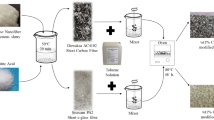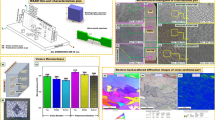Abstract
Pure rolled, annealed copper and copper-polyimide (Kapton) laminates were tested under constant amplitude cyclic loading to determine the fatigue crack growth rate. It was found that the laminated samples could sustain a much higher load for the same fatigue life, or had a longer fatigue life for the same load. This result is due to the polyimide bridging across cracks in the copper. The reduction of the crack tip stresses due to bridging is quantified by an analytical approximation and by layered finite element analyses. Despite the low elastic modulus of polyimide relative to copper, the stress reduction is significant due to the high effective stiffness of the bridging layer which results from the thinness of the adhesive layer between the copper and polyimide. When the experimental data from the laminated samples are analyzed using the results of a layered finite element analysis good correlation is obtained between the crack growth rate in pure copper and in the copper-polyimide laminates.
Similar content being viewed by others
References
Hellan, K. (1984). Introduction to Fracture Mechanics, McGraw-Hill, New York, 18.
Henshell, R.D. and Shaw, K.G. (1975). Crack tip finite elements are unnecessary. International Journal for Numerical Methods in Engineering 12, 93–99.
Rose, L.R.F. (1981). An application of the inclusions analogy for bonded reinforcements. International Journal of Solids and Structures 17, 827–838.
Rose, L.R.F. (1987). Crack reinforcement by distributed springs. Journal of the Mechanics and Physics of Solids 35, 383–405.
Schive, J. (1991). Predictions on fatigue. JSME International Journal, Series I 34, 269–280.
Swenson, D. and James, M. (1996). FRANC2D/L: A crack propagation simulator for plane layered structures — Version 1.2 User's Guide. Kansas State University, Manhattan, Kansas, 66506.
Tada, H., Paris, P. and Irwin, G. (1985). The Stress Analysis of Cracks Handbook, Del Research Corporation, St. Louis.
Tarn, J.-Q. and Shek, K.-L. (1991). Analysis of cracked plates with a bonded patch. Engineering Fracture Mechanics 40, 1055–1065.
Yeh, J.R. (1995). Fatigue crack growth in fiber-metal laminates. International Journal of Solids and Structures 32, 2063–2075.
Zehnder, A.T. and Ingraffea, A.R. (1995). Reinforcing effect of coverlayers on the fatigue life of copper-polyimide flex cables. IEEE Transactions on Components, Packaging, and Manufacturing Technology — Part B: Advanced Packaging 18, 704–708.
Author information
Authors and Affiliations
Additional information
Undergraduate student, University of Notre Dame, South Bend, Indiana, and summer research student at Cornell University
Rights and permissions
About this article
Cite this article
Zehnder, A.T., Swenson, D.V. & Pienkos, T.J. Polymer reinforcements for retarding fatigue crack growth in metals. International Journal of Fracture 84, 307–323 (1997). https://doi.org/10.1023/A:1007380704762
Issue Date:
DOI: https://doi.org/10.1023/A:1007380704762




